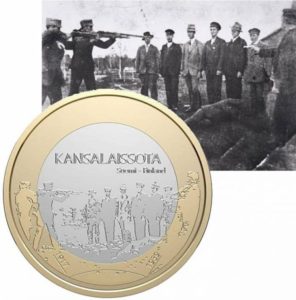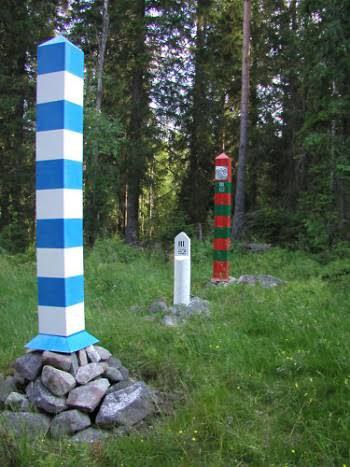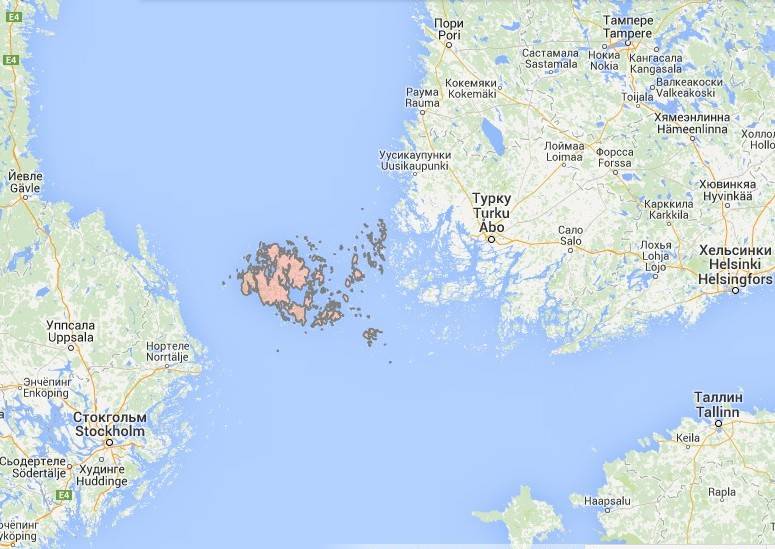Finland votes to join NATO. Well, to each their own, and Finland choses to exchange a prosperous border trade with almost transparent border without any remotely significant number of troops stationed along it to a locked border with a heavy concentration of military hardware and Helsinki added to the nuclear deterrent target list. If Finland wants to have the longest NATO border with Russia with all the consequences it entails, so be it.
In this post I want to present to translations of articles, one looking back at the history of Finnish-Russian relations, which the Finns prefer not to remember (or, maybe, they do remember, and are afraid of retribution?), and one looking at the possible future consequences, including economic, of the Finnish choice.
Sergey Vasiliev on April 15, 13:45
In 1550, the Swedish king Gustav I Vasa, by his decree, resettled several hundred residents of the city of Borgo, in Finnish – Porvoo, at the mouth of the Vantaa River flowing into the Gulf of Finland, ordering the construction of a commercial port. The river with the local name Helsing had several rapids – in Swedish “fors”, which gave the name of the settlement – Helsingfors. By the time it became part of the Russian Empire under the Friedrichsham Peace Treaty, the city had only four thousand inhabitants. Quite a backwater.
The first thing that Russians always did when they came to the wild lands was to build furiously and selflessly. The poor, shabby former outskirts of Sweden did not escape this fate either. Emperor Alexander I made Helsingfors the capital of the Grand Duchy of Finland. Under Nicholas I, a university was transferred here from the capital, named by him in honour of his brother Alexandrovsky. Alexander II granted the Russian colony its own constitution and a set of rights and freedoms that no one else enjoyed in the metropolis. Finland did not know serfdom. Finns were not recruited into the army even during the World War. They did not pay taxes, but enjoyed all the rights of subjects of the Empire. Finland had schools and gymnasiums with instruction in the Finnish language, had its own parliament and court. Along with the rouble, the Finnish Marka issued by the Bank of Finland was in circulation. The internal market of the principality was protected by customs while Finnish goods crossed the border of the Empire duty-free.
According to the tsarist authorities, all these goodies were supposed to arise a sense of gratitude among the local population, awaken a burst of patriotism and firmly bind the Scandinavian outskirts to the Russian Empire. Everything happened the other way around. Spoiled by the unprecedented benefits and privileges that fell on them for who knows what merits, the Finnish population gradually began to look at the titular people of Russia with disdain, as losers who were not able to organize for themselves the same standard of living as the Scandinavians, basking in the warmth of the tsar.
The Grand Duchy of Finland paid nothing to the treasury of the Russian Empire. The welfare of the natives exceeded the average Russian level. Thanks to this, peasant day-workers came from nearby provinces streamed to the Finnish village. Newcomers in Finland have always been disliked, a rural policeman could detain them, rob them for no reason, simply out of a sense of personal hostility. Archival reports have preserved eyewitness accounts of how, long before the revolution, the robbed peddlers from the Russian villages had to flee from the Finnish “hospitality”, while local policemen shouted: “Kill the damned Russians, nothing will happen to you!”.
Everyday nationalism, growing like a wild flower in the backyard of a Finnish village, as the local intelligentsia formed, successfully attached its root to the Russian treasury, flourished at the beginning of the twentieth century in the high society of the principality. In Finnish opposition newspapers, at first timidly, and then more and more insistently, appeals began to appear: “If we love our country, we need to learn to hate its enemies… Therefore, in the name of our honour and freedom, let our motto sound: “Hate and love! The death of “ryusya”! Or: “Russia has always been and will remain the enemy of humanity and humane development. Has there ever been a benefit from the existence of the Russian people for us? No!”.
Continue reading →




